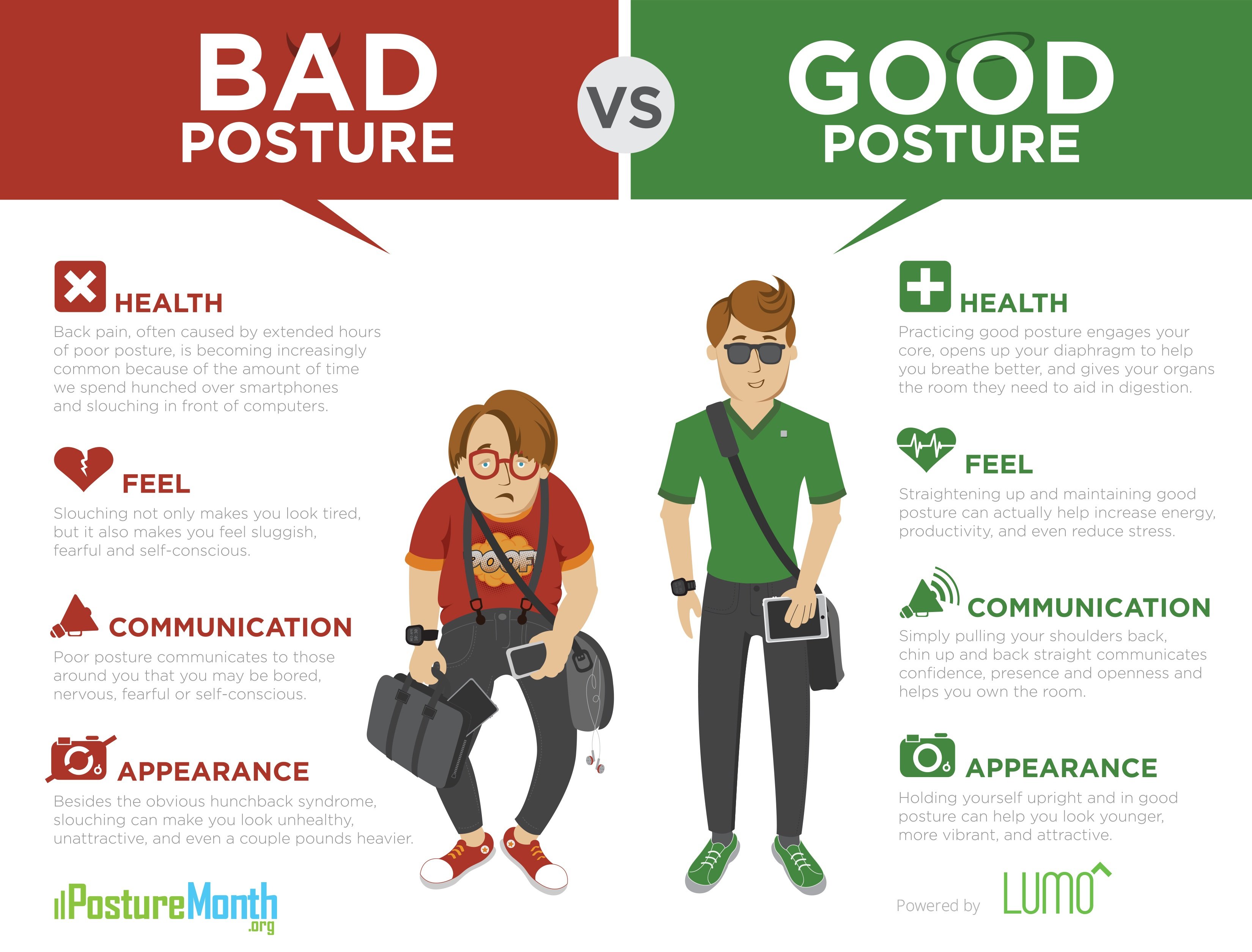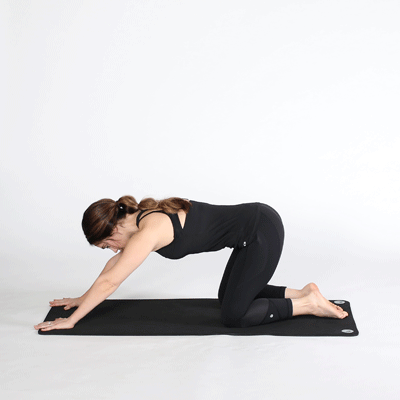When it comes to exercise, maintaining proper posture is crucial. It helps prevent injuries, improves muscle activation, and maximizes workout effectiveness. Proper posture ensures that your body is aligned correctly, enabling you to perform exercises with proper form and target the intended muscles. It also reduces the stress on your joints and spine, promoting overall body stability and balance. By prioritizing proper posture, you can optimize your exercise routine and achieve better results.
1. Benefits of maintaining proper posture during exercise

Maintaining proper posture during exercise offers several benefits. It ensures that your muscles are activated correctly, maximizing the effectiveness of your workout. Proper posture also helps prevent injuries by reducing stress on your joints and spine. Additionally, it promotes better muscle alignment and balance, allowing you to work your targeted muscles more effectively. By prioritizing proper posture, you can optimize your exercise routine and achieve better results.
2. Common mistakes and consequences of poor posture

When it comes to maintaining proper posture during exercise, there are common mistakes that people often make, which can have negative consequences on their bodies. Two common mistakes include:
- Slouching: Slouching is a common posture mistake that involves rounding the shoulders and hunching the back. This can lead to muscle imbalances, weak core muscles, and increased strain on the spine.
- Forward head posture: This occurs when the head is positioned forward, causing strain on the neck and upper back. It can lead to muscle tightness, headaches, and decreased range of motion.
Consequences of poor posture during exercise include increased risk of injury, decreased muscle activation, reduced exercise effectiveness, and chronic pain. It’s important to be aware of these mistakes and make the necessary adjustments to maintain proper posture for a safer and more efficient workout.
Understanding Correct Posture Alignment
To maintain proper posture during exercise, it’s essential to understand correct posture alignment. Here are key elements of good posture:
- Head: Keep your head aligned with your spine, avoiding forward head posture.
- Shoulders: Pull your shoulders back and down, avoiding slouching or rounding.
- Spine: Maintain a neutral spine by engaging your core muscles.
- Hips: Align your hips parallel to the floor, avoiding tilting forward or backward.
- Knees: Keep your knees slightly bent and in line with your toes.
- Feet: Stand with your feet shoulder-width apart and evenly distribute your weight.
By aligning these key elements, you can maintain proper posture and reduce the risk of injury during exercise.
1. Key elements of good posture
To maintain good posture during exercise, focus on the following key elements:
- Head: Keep your head aligned with your spine, avoiding forward head posture.
- Shoulders: Pull your shoulders back and down, avoiding slouching or rounding.
- Spine: Maintain a neutral spine by engaging your core muscles.
- Hips: Align your hips parallel to the floor, avoiding tilting forward or backward.
- Knees: Keep your knees slightly bent and in line with your toes.
- Feet: Stand with your feet shoulder-width apart and evenly distribute your weight.
By aligning these key elements, you can maintain proper posture and reduce the risk of injury during exercise.
2. Proper alignment for different exercise movements
When participating in different exercise movements, it is essential to maintain proper alignment to maximize effectiveness and reduce the risk of injury. Here are some tips for proper alignment during different exercises:
- Squats: Keep your feet shoulder-width apart, toes pointing forward, and knees in line with your toes. Sit back into your heels and keep your chest lifted.
- Push-ups: Position your hands slightly wider than shoulder-width apart, align your body in a straight line from head to toe, and engage your core muscles.
- Plank: Place your hands directly under your shoulders, keep your body straight and parallel to the floor, and engage your core muscles.
- Lunges: Step forward with one leg, keeping your knee directly above your ankle, and lower your back knee towards the ground while maintaining an upright posture.
- Deadlifts: Stand with your feet hip-width apart, hinge forward at the hips while keeping your back straight, and maintain a neutral spine throughout the movement.
Remember, proper alignment is crucial for getting the most out of each exercise and preventing unnecessary strain on your muscles and joints. Focus on maintaining good posture and form to reap the benefits of your workout.
Preparing Your Body for Proper Posture
Before engaging in any exercise, it is important to prepare your body for proper posture. This can be done through a combination of warm-up exercises to improve flexibility and mobility, as well as strengthening exercises to support proper alignment. By incorporating these exercises into your routine, you can better prepare your body for maintaining proper posture during exercise and reduce the risk of injury.
1. Warm-up exercises to improve flexibility and mobility
To improve flexibility and mobility before exercise, incorporate warm-up exercises into your routine. Try these exercises to prepare your body for proper posture:
- Neck circles: Gently rotate your neck in a circular motion, first clockwise and then counterclockwise.
- Arm swings: Stand with your feet shoulder-width apart and swing your arms backward and forward in a continuous motion.
- Hip rotations: Stand with your feet hip-width apart and rotate your hips in a circular motion, first clockwise and then counterclockwise.
- Leg swings: Stand close to a wall for support and swing one leg forward and backward in a controlled motion.
- Shoulder rolls: Roll your shoulders forward and backward several times to loosen up the muscles.
Remember to perform each exercise slowly and with control, focusing on proper form and breathing. This will help improve flexibility and mobility, reducing the risk of injury and allowing for better posture during exercise.
2. Strengthening exercises to support proper posture
To support proper posture, incorporate strengthening exercises into your routine. Focus on exercises that target your core, back, and shoulders, such as planks, rows, and shoulder presses. These exercises help build strength in the muscles that play a crucial role in maintaining good posture. Remember to perform these exercises with proper form and gradually increase the intensity to avoid injury.
Maintaining Proper Posture During Different Exercises
Maintaining proper posture during different exercises is essential for maximizing the benefits and preventing injuries. Here are some guidelines to follow:
- Posture tips for cardio exercises:
- Stand tall with your shoulders back and core engaged.
- Keep your head aligned with your spine.
- Avoid leaning forward or rounding your shoulders.
- Posture guidelines for strength training exercises:
- Maintain a neutral spine alignment.
- Engage your core and keep your shoulders down.
- Avoid arching your back or hunching forward.
Remember to focus on your form and make adjustments as needed to ensure proper posture throughout your workouts.
1 Posture tips for cardio exercises

Maintaining proper posture during cardio exercises is crucial to maximize the benefits and prevent injuries. Follow these tips:
- Stand tall with your shoulders back and engage your core.
- Keep your head aligned with your spine, avoiding leaning forward or rounding your shoulders.
- Maintain a relaxed but upright posture throughout your workout.
- Focus on maintaining a smooth and controlled movement, avoiding excessive swaying or bouncing.
- Pay attention to your body’s alignment and make adjustments as needed to ensure proper form and posture.
2. Posture guidelines for strength training exercises
When performing strength training exercises, it’s important to maintain proper posture to ensure effectiveness and prevent injuries. Follow these guidelines:
- Keep your spine neutral: Avoid rounding or arching your back. Engage your core and maintain a straight alignment from your head to your hips.
- Watch your form: Pay attention to proper alignment of each exercise. Maintain stability and control throughout the movement, avoiding excessive swinging or jerking motions.
By following these posture guidelines, you’ll optimize your strength training workouts and reduce the risk of strain or injury.
Correcting Posture Mistakes
Correcting posture mistakes is crucial to prevent further damage and improve overall posture. Here are some common posture mistakes and how to correct them:
- Rounded shoulders: Strengthen the muscles in your upper back and shoulders with exercises like rows and shoulder retractions. Focus on pulling your shoulders back and down during daily activities.
- Forward head posture: Perform neck stretches and strengthen the muscles in your neck and upper back. Keep your chin level and avoid excessive tilting or forward jutting.
- Slouched posture: Engage your core muscles and imagine a string pulling your head up towards the ceiling. Sit or stand tall with your shoulders back and relaxed.
- Anterior pelvic tilt: Strengthen your glutes and core muscles with exercises such as bridges and planks. Stretch your hip flexors regularly to help correct the tilt.
Remember to be mindful of your posture throughout the day and make necessary adjustments to maintain proper alignment. Regular practice and awareness can greatly improve your posture over time.
1. Common posture mistakes and how to correct them
It is important to be aware of common posture mistakes and know how to correct them to maintain proper alignment. Some common mistakes include rounded shoulders, forward head posture, slouched posture, and anterior pelvic tilt. To correct these, strengthen the relevant muscles, perform stretches, and focus on maintaining proper alignment during daily activities.
2. Exercises and stretches to improve posture

To improve your posture, incorporate these exercises and stretches into your routine:
- Chin Tucks: Sit or stand with your back straight. Gently tuck your chin in towards your neck while keeping your eyes looking forward. Hold for a few seconds and repeat.
- Thoracic Extension: Stand against a wall with your feet shoulder-width apart. Place a foam roller between your shoulder blades. Lean back against the roller and extend your spine. Hold for 30 seconds and repeat.
Remember to perform these exercises with proper form and gradually increase the intensity as your posture improves.
Importance of Post-Workout Stretching for Posture

Post-workout stretching is crucial for maintaining proper posture. It helps to elongate the muscles and reduce muscle tightness, which can improve overall posture. Stretching after exercise also helps to prevent muscle imbalances and promotes better alignment, reducing the risk of postural problems. Incorporate post-workout stretching into your routine to enhance your posture and overall physical well-being.
1. Benefits of post-workout stretching for posture
Stretching after a workout plays a crucial role in maintaining good posture. It helps to elongate the muscles and reduce muscle tightness, which can lead to improved alignment and overall posture. Additionally, post-workout stretching aids in preventing muscle imbalances, reducing the risk of postural problems. Incorporate stretching into your routine to enhance your posture and overall physical well-being.
2. Best stretches to maintain proper posture after exercise
After a workout, it’s important to incorporate stretches that can help maintain proper posture. Here are two stretches that can be beneficial:
- Chest Stretch: Stand with your feet shoulder-width apart and interlace your fingers behind your back. Pull your shoulders back and down while gently lifting your arms away from your body. Hold this position for 30 seconds and repeat 2-3 times.
- Hip Flexor Stretch: Kneel on one knee with the other foot forward, making sure your knee is directly above your ankle. Keeping your back straight, gently press your hips forward until you feel a stretch in the front of your hip. Hold for 30 seconds on each side, repeating 2-3 times.
These stretches can help release tension in muscles that can become tight during workouts, helping to maintain proper posture and prevent imbalances.
Conclusion
Maintaining proper posture during exercise is crucial for preventing injuries and maximizing the benefits of your workout. By understanding correct alignment and incorporating warm-up exercises and stretches, you can support your body’s posture and improve your overall performance. Remember to always prioritize good posture and make it a part of your daily life to enjoy the long-term benefits.
Summary of key points
Maintaining proper posture during exercise is crucial for preventing injuries and maximizing the benefits of your workout. Key points to remember include understanding correct alignment, incorporating warm-up exercises and stretches, and using proper posture during different types of exercises. By prioritizing good posture and making it a part of your daily life, you can enjoy long-term benefits and prevent posture-related issues.
Tips for incorporating proper posture into daily life
To maintain proper posture throughout your daily activities, consider the following tips:
- Be conscious of your posture when sitting or standing
- Use ergonomic furniture and equipment
- Take breaks to stretch and move around
- Practice exercises that promote good posture
- Strengthen your core and back muscles
- Avoid slouching or hunching over
- Use a cushion or lumbar support when sitting for long periods
- Maintain a balanced and aligned body position
- Stay mindful of your posture while using electronic devices or driving.
By incorporating these habits into your daily routine, you can improve your posture and avoid long-term issues.

